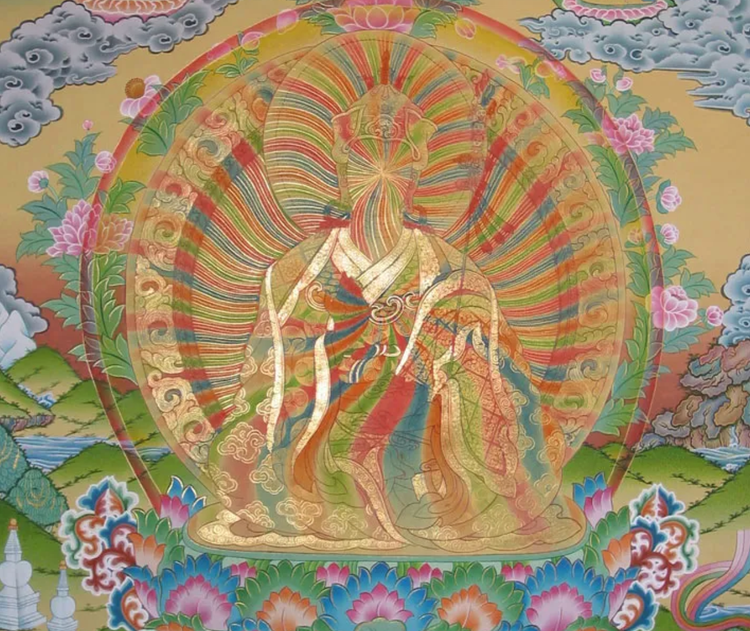The Three Continuums: The Foundations of Buddhist Tantra

When most people hear “tantra,” they picture elaborate rituals, graphic deities, skull cups, and secret symbols. The imagery is intense. The ritual items are exotic. And it's all thick with symbolism.
But all of that is secondary.
At its heart, tantra isn’t about ritual. It’s about recognizing our true nature and learning to embody that in a life dedicated to practice. It’s a method for seeing our true nature clearly—cutting through ordinary appearances, habits, and projections until only the truth remains.
Tantra is the path that uses everything—our body, speech, and mind, our perceptions, and even delusion itself—as fuel for waking up.The word tantra means “continuum,” or an unbroken stream. It symbolizes the unbroken continuity from confusion to awakening, from our ordinary mind to Buddha mind. That continuum has three dimensions: ground, path, and result.
If you don’t understand these three continuums, you’re likely to get lost in the window dressing of tantric rituals. If you do, the wisdom of the entire tantric path makes sense.
Ground Continuum: The Nature You Keep Missing
The ground continuum is the ultimate nature of your mind—before it splinters into stories of who we are and the various identities and roles we play. It’s not mystical or esoteric. It’s the fundamentally pure and ever-present reality of awareness itself.
This awareness has no beginning. It’s nature is the indivisibility of clarity and emptiness, appearance and emptiness. It doesn’t need fixing. It just needs to be experienced and recognized directly.
Miss it or confuse it, and you’re in samsara, cycling through the cycle of confusion and reactivity. Recognize it, and it is none other than the timeless freedom of nirvana.
Though the ground continuum is the nature of our own mind, few people actually taste it. Why? Because they chase after experiences instead of resting in what’s always been there. If you want to recognize the ground, stop reaching. Sit down. Learn to be still. Start letting go.
Path Continuum: Removing the Veils
The path continuum is everything you do to uncover that primordial condition of the ground.
This includes all your efforts to clarify your view, meditation, and conduct. All the uncommon tantric practices of the generation and completion stages, the various methods to work with the channels and winds, the pointing out instructions, these are all methods to penetrate and recognize this ultimate nature of the mind. All the practices to purify our perception, eliminate fixation on impure appearances, to let go of ordinary conceptions, all of that is to remove the veils obscuring our true nature, the naturally present primordial Buddha that is our true face.
Tantra isn’t exotic and ornamental. It’s a functional and practical method designed to disrupt your usual habits, dissolve your fixation, and point you back to the ground of being.
The path is a continuum because it doesn’t stop. From the first moment of entering the practice it’s one unbroken stream until the accomplishment of the result. It’s not about becoming something else or something better. It’s about removing everything that obscures our true nature.
Result Continuum: Realizing What Was There All Along
The result continuum is the full actualization and realization of the ground continuum. It’s the recognition of what’s been here the whole time.
When all the obscurations fall away, the ground reveals itself fully as the three kayas and five wisdoms. These aren’t added on or accomplished. They’re the spontaneously present nature of the ground when it’s no longer veiled.
You don’t manufacture enlightenment anew. You uncover it.
There’s no actual gap between ground and result. Confusion only creates the illusion of a separate self traveling the path. The result is called a “result” only because you’ve brought the fruition of that which is already, uninterruptedly, present within oneself to completion.
Dzogchen View, Tantric Method
As Dzogchen practitioners, we start with the view. Not as a philosophy, but as a recognition of the ground: the nature of your own mind, pure from the beginning. Then, maintaining the view, we practice the path of skillful means with the tantric method.
Tantra offers a diverse set of tools. Dzogchen reminds you what the tools are for. Without the Dzogchen view, you end up endlessly polishing the mirror instead of looking into it.
Recognize the view. Use the methods. Let them work together. When they do, the generation and completion stages stop being separate practices and start becoming the living display of awareness itself.
Don’t Speculate. Practice.
The three continuums aren’t concepts to learn about and debate. They’re basic principles about the nature of the tantric view and path.
If you really get this—deep in your bones, not just your head—you’ll know the point of every mantra, every visualization, every drop of practice: to recognize the state of ever-present awakening, and to embody that in a living practice.




